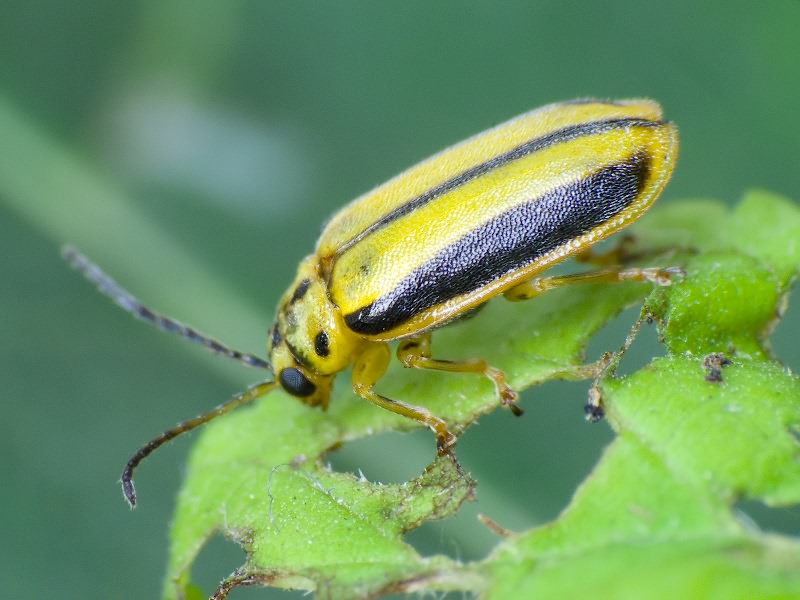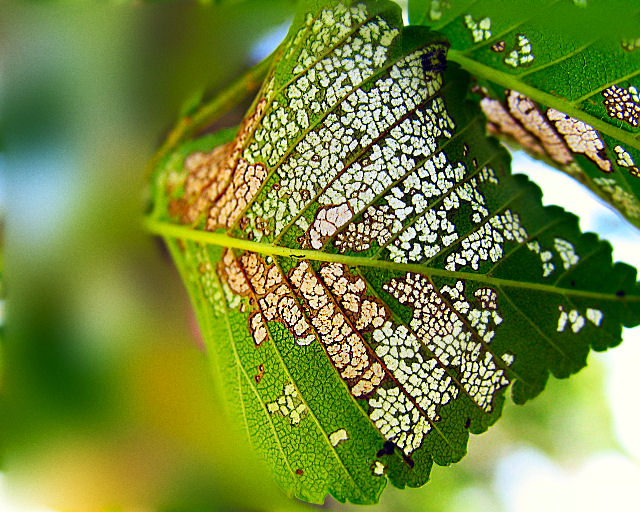
Elm trees are an iconic part of the Canberra environment. These beautiful, slow-growing trees have been around since the capital city’s foundation, with many planted by horticulturist Thomas Weston in the 1920s.
Over the decades they have grown into magnificent, tall, leafy trees. But they are under threat from a new pest: the elm leaf beetle.
The elm leaf beetle was first discovered in Canberra in 2010, and numbers are increasing rapidly. The beetle comes out in Spring, crawling (or flying) up to the canopy to lay its eggs. The eggs hatch after just a few weeks, and immediately begin to feed on the leaves until they are completely skeletonised.
As the larvae grow and transform into a beetle, they too lay eggs and the process begins all over again. Adults and larvae continually feed on the leaves until the tree is stripped of foliage, extremely weak and vulnerable to disease.

Canberra horticulturist Jackie Warburton, who runs Terra Solarus, says, “It’s incredibly sad. These trees take decades to mature, and over the course of one or two seasons the beetle completely destroys it. The beetle may not kill the tree directly, but by weakening it the tree is likely to die.”
Ms Warburton says not enough is being done in the Canberra region to control these infestations, and that a plan is needed to ensure we don’t lose our elms.
“Other regions such as Bathurst are taking this problem really seriously, with government-initiated protection plans in place to routinely treat the trees. We need to do the same here. Land owners who are lucky enough to have an elm in their yard should also have a plan to protect their tree.”
There are a number of ways to treat elm leaf beetle infestations, with trunk injections generally considered to be the safest and most effective method.
“Some people recommend trunk banding or horticultural glue and Confidor tablets, but it usually doesn’t work. Banding the trunk doesn’t stop the beetles from flying up to the canopy, and Confidor tablets are harmful to the microbes and worms in the soil. They are also made for small plants and shrubs; most elm trees are huge.
Tree stem injections are the best form of treatment. They protect the tree, don’t affect the soil, and are effective for 2-3 years.”
Tree stem injections start from $160, depending on the size of the tree.
To chat with Ms Warburton about your elm tree, or for a free quote on tree stem injections, call 0414 845 238 or visit Terra Solarus. You’re also welcome to send her a text or email with an image of your elm leaves if you are unsure as to whether your tree is at risk.












